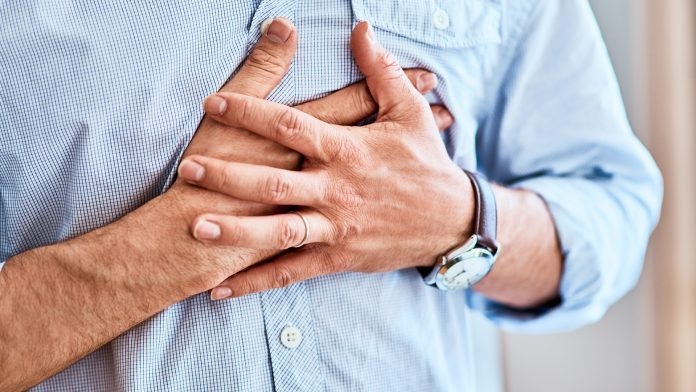
A study by the University of Gothenburg has found that survival rates after a cardiac arrest have doubled over the last 30 years.
Around 10,000 people in Sweden suffer a sudden cardiac arrest every year. Speed is crucial when treating someone who has suffered a cardiac arrest, and the actions of bystanders who are able to perform cardiopulmonary resuscitation (CPR) are often vital. Three-quarters of cardiac arrests occur when people are going about their everyday lives, while the other quarter takes place in hospitals.
A sudden cardiac arrest is usually fatal, regardless of where it happens. Cardiac arrest is the most common cause of death for people with coronary artery disease, diabetes, and heart failure.
Cardiac arrest treatment has significantly improved
The study was published in European Heart Journal. It includes data from the Swedish Cardiopulmonary Resuscitation Registry on 106,296 cases of out-of-hospital cardiac arrest between 1990–2020. The study also includes data on 30,032 in-hospital cases between 2004–2020.
“This is a comprehensive study that describes care and survival following sudden cardiac arrest. It’s a detailed report that clarifies three decades of resuscitation in Sweden as a whole, and it shows that the situation has been changing rapidly for patients and the care providers alike,” said Araz Rawshani, author of the study and researcher at Sahlgrenska Academy at the University of Gothenburg.
Rawshani’s findings show that chances of survival after an out-of-hospital cardiac arrest doubled between 1990-2020, with survival rates now at 11%. However, this improvement predominantly occurred in the late 1990s and 2000s and little rise in survival has been noted in the last ten years.
In-hospital cardiac arrest survival has risen by a factor of 1.2 since 2004 and survival rates are now up to 36%. This improvement has mostly occurred since 2010 and, according to the researchers, was due to better skills and resources in healthcare.
“In out-of-hospital cardiac arrest, the rise in the number of people trained to perform CPR is probably the driver of that positive trend. Millions of Swedes have been trained in this vital skill, which can come in useful at any time, and these people intervene ever more often. Today, non-professionals (bystanders) start the CPR in the majority of all cases outside a hospital,” said Rawshani.
Improvement is still needed
Rawshani has identified ambulance delays as a key reason for why the upward trend of survival after an out-of-hospital cases ended. “Ambulances aren’t managing to arrive in time for the patients; the delays in getting to them have constantly increased,” said Rawshani.
As well as this, a decline in chronic artery disease has contributed to the plateaux. “The proportion of patients who are relatively easy to resuscitate – that is, those whose heart stops because of acute or chronic coronary artery disease – has fallen dramatically in the past few decades,” explained Rawhsani.
Conversely, hard-to-treat cases such as those caused by lung disease or heart failure, are increasing. Therefore, it is likely that successful resuscitation will become harder to achieve in the future.
Despite the positive general increase in survival rates after a cardiac arrest, Rawshani makes clear that further improvement will be needed in the years to come. “The study indicates that health care, from the emergency measures taken by paramedics to post-resuscitation nursing, is set to face new and daunting challenges in the years ahead, with a patient population who will get increasingly difficult to resuscitate,” he concluded.






















